If you like your food with a little spice, you might be in the habit of sprinkling dried chile pepper flakes onto your meals. Or in your favorite recipes. Why not try making your favorite spice at home, from locally grown garden fresh peppers? Read on to learn how to make dried chili flakes at home!
Another way to preserve hot peppers is by fermenting them!
Originally published April 2019; this post has been updated.
We like our food with a bit of spiciness. Not crazy hot, but just enough heat to make our mouths happy. Growing hot peppers in our garden just makes sense.
I like to grow jalapeño peppers, but since we’ve moved to the island, we also grow Hawaiian chile peppers. The plants are prolific and they’re perennial, so we almost always have fresh hot peppers at our disposal.
Even so, it’s handy to have a shaker jar of dried chile pepper flakes on hand for cooking. We use them in our homemade Italian sausage recipe, stir them into homemade chili, and add them to my homemade taco seasoning. I also like to package these crushed red pepper flakes into small jars to give as gifts from the garden.
5 Easy Steps to Transform Your Pantry!
Ready to switch from store bought to homemade? Let me help you make some changes! Grab my FREE five-part guide to getting started.
The Handcrafted Pantry

Ready to DIY your pantry with more wholesome ingredients? Check out my ebook, The Handcrafted Pantry! Filled with delicious recipes for some of your favorite condiments, snacks, and toppings, it’s the guide you need to start skipping packaged products and embrace homemade.
Ingredients
Chiles — Any sort of chile pepper can be used to make this homemade seasoning. Red cayenne peppers, jalapeño peppers, ghost peppers. The hotter the pepper is when it’s fresh, the hotter your pepper flakes will be. Red peppers will result in the familiar rust-colored flakes, but there’s no reason you can’t use green hot peppers.
Dehydrating
In order to make chile peppers shelf stable, you’ll need to remove all of the moisture from fresh peppers. Slicing them into smaller portions can help this process move along more quickly. Once sliced, it will take six to eight hours in a dehydrator until they’re ready to crush.
No matter what sort of pepper you opt to use, you’ll start by drying the peppers. I use an Excalibur food dehydrator for all of my dehydrating projects; I’ve had it for more than a decade now. Other brands work fine, or you can use your oven to dry the peppers.
Wash and dry the peppers. Remove the stem end and cut peppers into small pieces 1/8″ thick. Small peppers can be left whole.
Spread the pepper pieces in a single layer on a dehydrator tray or on a baking sheet.
Dehydrate at 135°F for 6-8 hours.
When thoroughly dry – the should be brittle – transfer dried peppers to the bowl of a food processor, spice grinder, or coffee grinder and pulse until the pepper pieces are sized as you like.
You can make as much or as little of these dried chile pepper flakes as you like; you’ll end up with about half as much dried pepper as the amount you start with. One cup of fresh hot peppers will net about a half cup of dried chile pepper flakes. If you prefer a little less heat, be sure to give dehydrated bell peppers a try, using this method.
(The cool long-handled wooden measuring spoon you see here was a gift from Andrea, the founder of Utensi, whom I met at a conference awhile back. Isn’t it great??)
FAQs
What’s the difference between chile peppers and chili peppers?
Nothing and everything. Chile peppers are hot peppers. There are countless varieties of chile peppers, all with a different heat intensity, color, and shape.
When people type out “chili peppers” they’re referring to this group of spicy capsicum, but have mistakenly used an i where an e should go. The term chili usually refers to a chili recipe made with beef and beans.
Can I make these in an oven?
You can try – if your oven goes low enough! Modern ovens don’t always have temperatures that are as low as a dehydrator. Not all ovens go as low as 175. Also, keep in mind that you won’t want to do this in a convection oven as the fan will blow the food around as it dries and gets lighter.
Can I make my own cayenne pepper powder?
Yup! Just keep processing the dehydrated peppers until you have a powder. I mean, you’d have to use cayenne peppers to make it official, but any “pepper powder” will do! It’s the perfect way to spice up your meals.
Storage
Store homemade crushed chili flakes in an airtight container for up to a year. Just make sure you keep it sealed! You can also purchase desiccant packets or seal portions in mylar bags.
If you’re really into this recipe, you can also make your own turmeric powder! I’ve also created my own curry powder and taco seasoning. Your pantry can easily be all homemade.
★ Did you make these dried chile pepper flakes? Don’t forget to give it a star rating below! ★
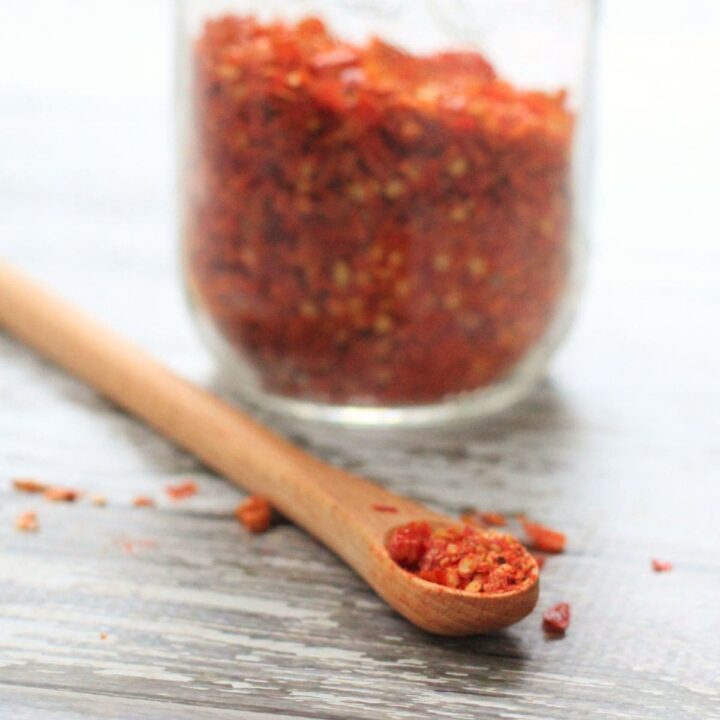
Dried Chile Pepper Flakes
Preserve fresh hot peppers by dehydrating them into dried chile pepper flakes perfect for sprinkling on pizza or seasoning recipes.
Ingredients
- 2 cups hot peppers
Instructions
- Wash and dry hot peppers.
- Cut off stem end. For larger peppers, cut into discs, about an eighth of an inch thick. You can leave smaller peppers whole or halve them lengthwise.
- Place chile peppers on a dehydrator tray, with space between them.
- Dry at 135 degrees for 6 to 8 hours.
- When thoroughly dry and brittle, transfer to a food processor bowl and pulse until the dried chile pepper flakes are a size you like.
Notes
If you don't have a food processor, put the dried chile peppers in a bowl and crush with a heavy wooden spoon. Or use a mortar and pestle.
Any sort of chile pepper can be used to make this homemade seasoning. Cayenne peppers, jalapeño peppers, ghost peppers. The hotter the pepper is when it’s fresh, the hotter your pepper flakes will be.
Nutrition Information:
Yield: 50 Serving Size: 1 gramsAmount Per Serving: Calories: 2Unsaturated Fat: 0g
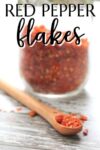
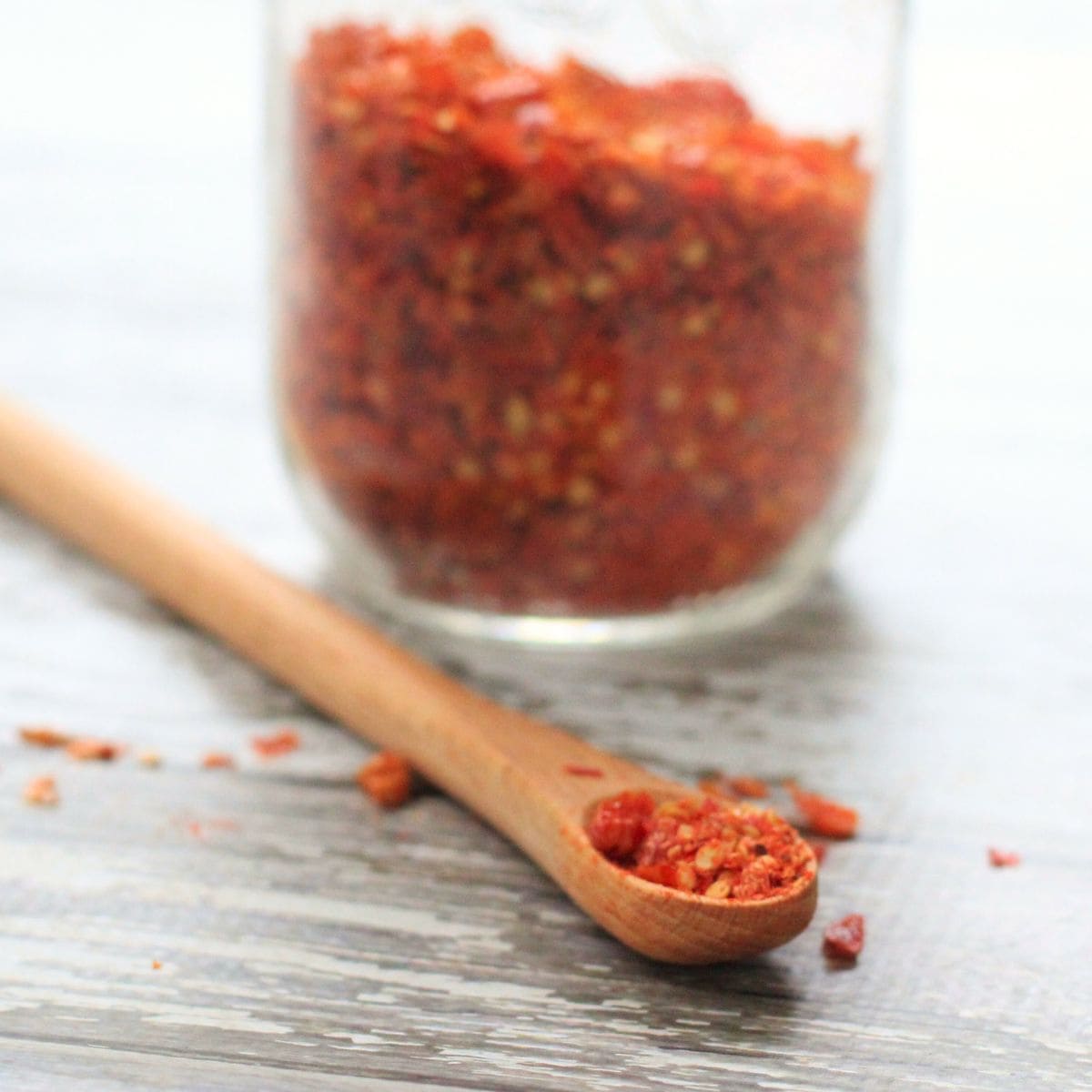
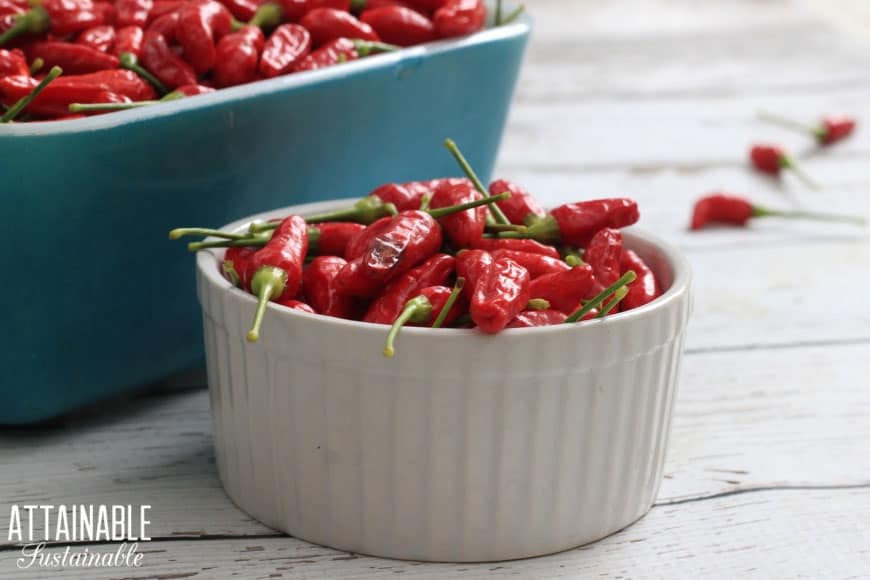
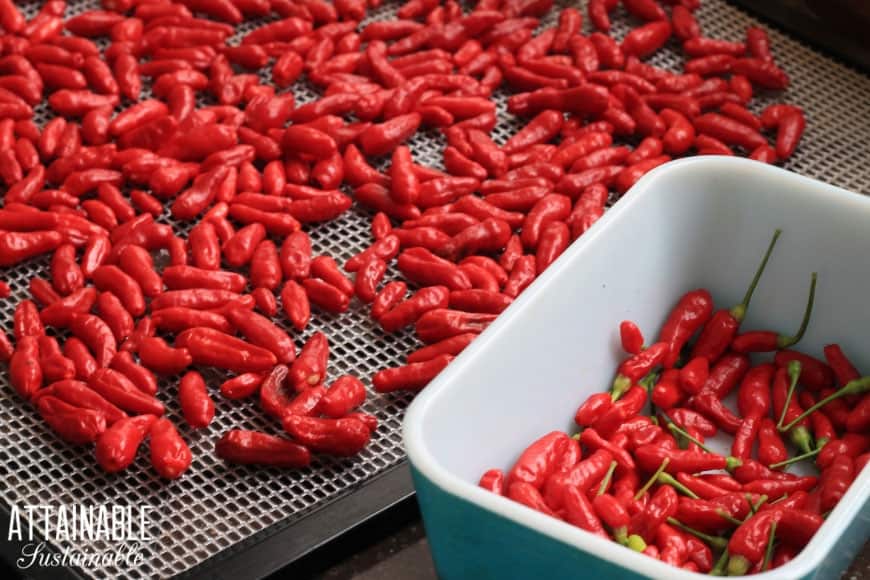
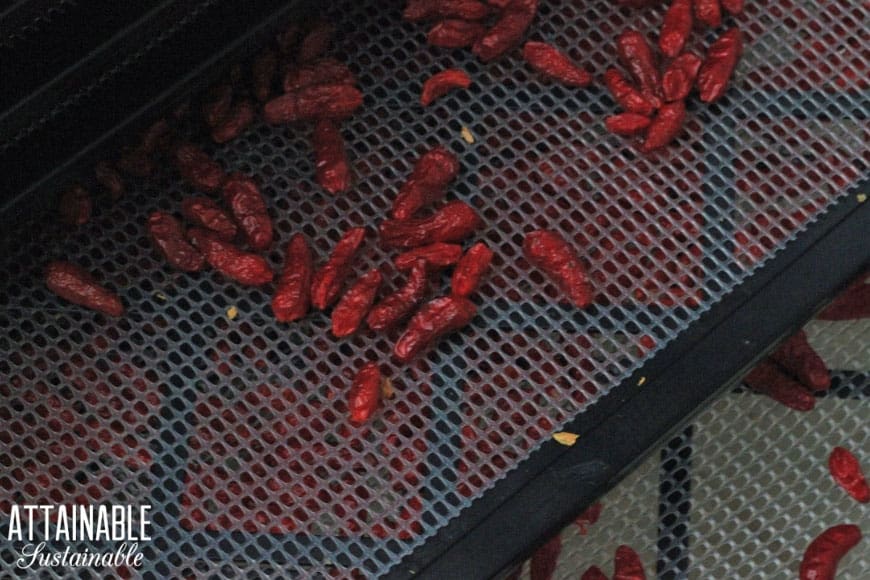
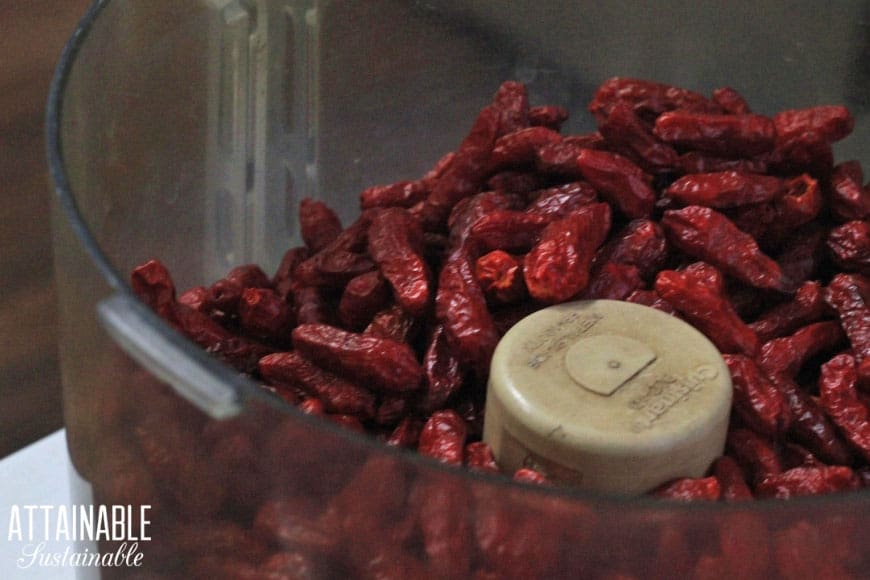
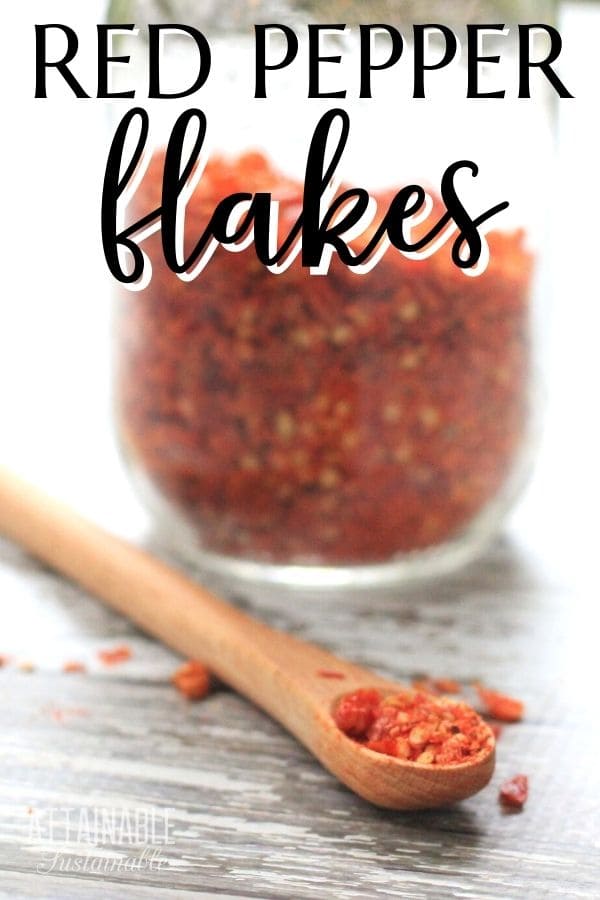





Amazing!
I think I will plain cheat on that one and tell you my results. The whole idea is just genius and here is why. I buy already dehydrated peppers at the local Mexican market. We cut them open throw away the seeds, soak to re-hydrate and blend as the basis of sauces. In a large bag there can be seen about a 1/2 cup of seeds sometimes, I will let you know, GENIUS!
I made some pepper flakes for a friend. She sent me some not-too-hot pepper seeds to plant. Got a bunch of peppers. Within two days of the hot South Carolina summer the peppers were dry and ready to be turned into flakes. She enjoyed the freshness of the flakes.